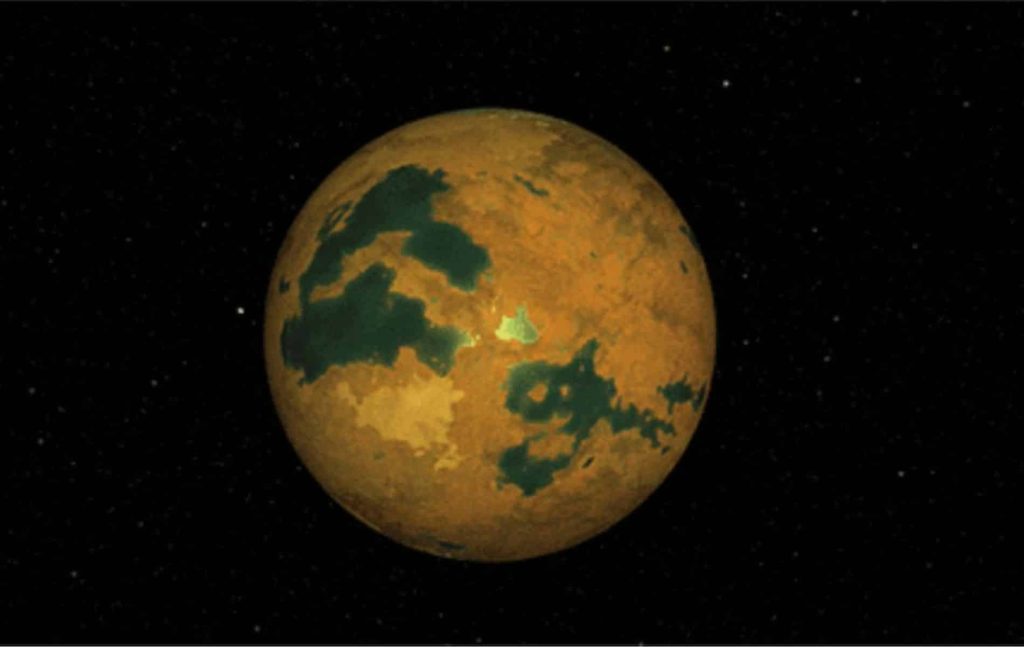There was great excitement when researchers actually discovered a planet orbiting the star 40 Eridani A. But unfortunately, Vulcan turned out to not exist at all.
Remember when researchers discovered a planet orbiting the star 40 Eridani A in 2018? Star Trek fans were thrilled, because this star in the famous Star Trek movies is home to the planet Vulcan, where Mr. Spock comes from. However, last year this discovery was already called into question. And now the bullet has finally been fired: “Vulcan” belongs only in the realm of fantasy.
Super Earth
Six years ago, astronomers held Dharma Endowment Telescope Targeting the star 40 Eridani A. This led to the discovery of “Vulcan” (officially named HD 26965 b or 40 Eridani b). Rather, the planet will be a true super-Earth, only 16 light-years away from our Earth. Researchers estimate that the planet was about twice the size of Earth (or slightly smaller than Neptune), which completes an orbit around its star every 42 days. And: It will also be within the habitable zone!
No surprise
However, the news that Vulcan ultimately did not exist does not come as a complete surprise to the original discoverers. In their research, they warned that evidence of Vulcan’s existence may not point to an actual planet, but rather to disturbances in the star itself. The latest analysis, which uses high-resolution measurements of radial velocities that were not available in 2018, confirmed that a cautious attitude toward the potential discovery was indeed justified.
Small fluctuations
How does this work exactly? When scientists discovered the planet in 2018, they did not observe it directly. They inferred its existence only from small fluctuations in the motion of the parent star (see box).
Two ways to detect planets
In recent years, thousands of planets (candidates) have been discovered outside our solar system, but only a few have been directly observed. Most of these exoplanets are found by impacting their host star, mainly through two methods. The first is the transit method, where scientists infer the presence of a planet from regular dips in the star’s brightness, caused by the planet periodically passing in front of the star and blocking some of the light. The second method is the radial velocity method, in which the presence of planets is inferred from small fluctuations in the motion of their parent star. When a planet orbits a star, it pulls on the star with its gravity, causing it to move back and forth relative to Earth. This motion is subtle but can be detected using sophisticated equipment, such as observing the tiny shifts in the star’s spectrum — a change in the colors of light — that occur when the star moves toward us (blue shift) or away from us (red shift).
Briefly, the presence of 40 Eridani b was determined by looking at changes in the parent star’s spectrum, indicating that it was moving back and forth. But last year researchers came up with disappointing news. In their study, they concluded that these changes in the spectrum were not caused by the planet pulling the star, but by activity on the surface of the star itself.
Ned
New study Now consolidate these results. A recent research team studied 40 Eridani A-type planets using an instrument called NEID, which was recently added to the telescope complex at Kit Peak National Observatory In the US state of Arizona. NEID, like other radial velocity instruments, uses the Doppler effect: changes in the spectrum of a star’s light that indicate its oscillating motions. In this case, analyzes of the planet’s putative signal at different wavelengths of light — coming from different layers of the star’s outer shell, or photosphere — showed important differences between individual measurements of the wavelengths — their Doppler shifts — and the total combined signal. This likely indicates that the planet’s signal is actually caused by something flashing on the star’s surface, coinciding with a 42-day rotation period. Consider the swirling hotter and cooler layers beneath the star’s surface (convection), as well as stellar surface features such as spots and bright, active regions. Both can change the star’s radial velocity sign.
Did you know…
…The planet Vulcan is also burning in the Star Trek universe? In the 2009 film Star Trek, a Romulan villain named Nero uses an artificial black hole to destroy Spock’s homeworld.
Although hopes of finding the planet Vulcan around the star 40 Eridani A have faded, the news is not entirely negative. The study thus provides an important lesson for future exoplanet research. The demonstration of finely tuned radial velocity measurements suggests that we will be better able to distinguish between true planets and motions on the surfaces of distant stars. This means that finding planets that already exist has become a little easier.

“Coffee buff. Twitter fanatic. Tv practitioner. Social media advocate. Pop culture ninja.”











More Stories
Which can cause an increase in nitrogen.
The Central State Real Estate Agency has no additional space to accommodate Ukrainians.
The oystercatcher, the “unlucky national bird,” is increasingly breeding on rooftops.